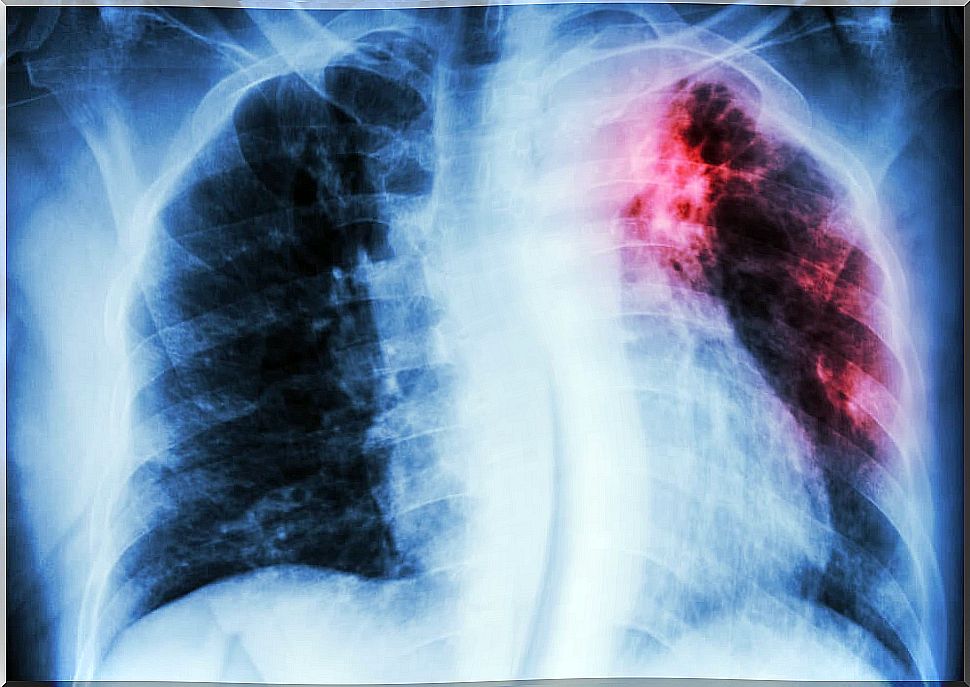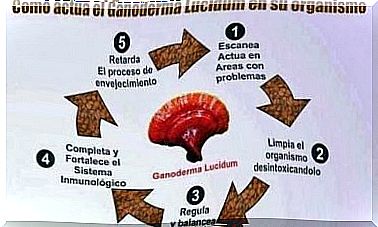Interstitial Lung Disease
The symptoms of this group of diseases are very similar to each other, therefore, it is important to obtain a good diagnosis in order to cure it.

Actually, interstitial lung disease is a generic name for a wide number of diseases. The common thing in all of them is that the lung tissues become inflamed and damaged.
Interstitial lung disease is also known as diffuse parenchymal lung disease. In all cases it is the result of damage to the cells that surround the alveoli.
This ends up causing inflammation and later fibrosis or scarring in the lungs. When these diseases evolve they give rise to respiratory distress. If they advance, they lead to respiratory failure.
Respiration and interstitial lung disease

Under normal conditions, when a person inhales, the alveoli fill with air. Soon the oxygen passes into the bloodstream. When you exhale, carbon dioxide passes from the blood to the alveoli, to then be expelled from the body.
If interstitial lung disease occurs, the lungs and breathing are affected. In the first phase what happens is that the lung tissue is damaged for a known or unknown reason. This causes the walls of the alveoli to become inflamed.
Scars, that is, fibrosis, begin to appear in the interstitium of these alveoli. When there is interstitial lung disease, normal breathing is disturbed. The alveoli become stiff and cannot fully expand.
Therefore, the passage of oxygen into the bloodstream is limited, as well as the expulsion of carbon dioxide. As the disease progresses, breathing becomes increasingly difficult.
General characteristics of interstitial lung disease
There are more than 300 pathologies that coincide with the concept of interstitial lung disease. Most are rare. The most common are sarcoidosis, idiopathic pulmonary fibrosis, pneumoconiosis, extrinsic allergic alveolitis, that associated with connective tissue disease and drugs.
Some studies suggest that about 50% correspond to sarcoidosis and idiopathic pulmonary fibrosis. However, this is not fully corroborated, since a specific diagnosis is not always achieved.
Interstitial lung diseases sometimes have a rapid and sometimes gradual course. Therefore, while some patients present mild symptoms at the beginning, others have very severe manifestations.
The disease sometimes remains relatively stable, but can change suddenly at any time. Some of these diseases also affect other organs of the body.
Causes of the disease

The exact cause of interstitial lung disease is unknown. It is suspected that one of the factors that precipitates its appearance is the inhalation of polluting materials. Some of the most common types are:
- Black lung disease. It is produced among miners by inhaling coal dust.
- Abestosis. It is produced by inhaling asbestos.
- Siderosis. By inhalation of iron dust.
- Farmers’ lung disease. Inhalation of dust that comes from grains, hay, and straw.
- Silicosis. When silicon is inhaled.
There are some autoimmune diseases that also give rise to interstitial lung disease. These include rheumatoid arthritis, lupus, scleroderma, and sarcoidosis. Some medicines can also be the origin of these diseases. Tobacco use is a risk factor.
Symptoms, diagnosis and prognosis

The main symptom is shortness of breath. At first it appears when doing heavy exercise. Then it shows up in everyday activities, like eating or talking. Dry cough, weight loss, joint pain, and fatigue are common. Crackling noises are usually present when the chest is listened to.
In the advanced stages of interstitial lung disease, it is common for the bases of the fingernails to become abnormally enlarged. Lips, skin, and nails turn purple due to low oxygen in the blood.
Most commonly, clinical tests are ordered to establish the diagnosis. The most common are blood tests, chest x-rays, computed tomography, bronchoscopy, echocardiography, open lung biopsy, blood gas, pulmonary function tests, and resistance tests.
The prognosis depends on the cause that produces it. Also of the precocity of the diagnosis. The most difficult cases to treat are those that correspond to idiopathic pulmonary fibrosis or of unknown cause.









